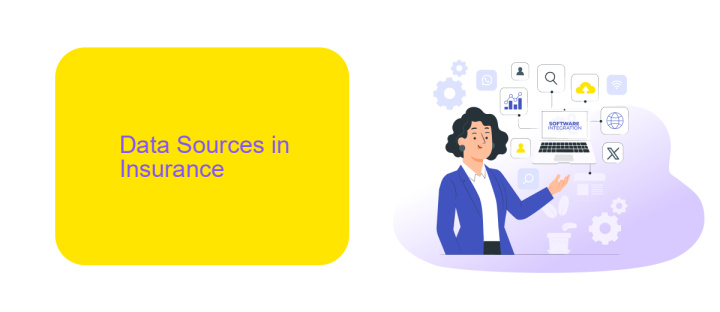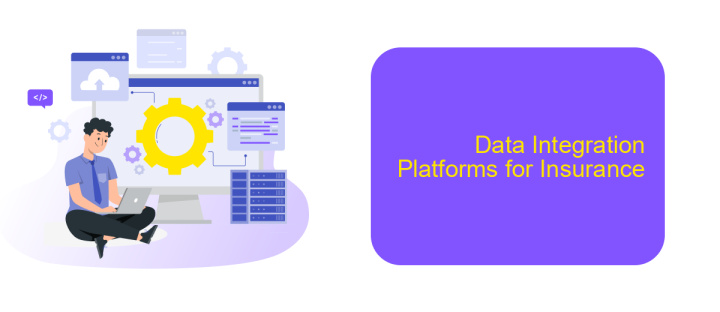Data Integration in Insurance
Data integration in insurance is a critical process that consolidates diverse data sources into a unified system, enhancing decision-making and operational efficiency. By seamlessly merging data from various platforms, insurers can gain comprehensive insights, improve customer service, and streamline claims processing. This article explores the significance of data integration, its challenges, and the innovative solutions transforming the insurance industry.
Introduction
Data integration in the insurance sector has become a critical aspect in enhancing operational efficiency and customer satisfaction. With the increasing amount of data generated from various sources, insurers need robust systems to consolidate and analyze this information effectively. This integration helps in making informed decisions, reducing risks, and improving service delivery.
- Streamlining data from multiple sources
- Enhancing data accuracy and consistency
- Facilitating real-time data access
- Improving customer insights and personalization
One of the tools that can significantly aid in this process is ApiX-Drive. It provides seamless data integration capabilities, allowing insurance companies to automate data flows between different systems without the need for extensive coding. By leveraging such tools, insurers can ensure that their data is always up-to-date and accessible, ultimately leading to better decision-making and enhanced customer experiences.
Data Sources in Insurance

Insurance companies rely on a variety of data sources to assess risk, process claims, and provide personalized services to their customers. These data sources include internal databases, customer relationship management (CRM) systems, and historical claims data. Additionally, external data from government records, financial institutions, and social media platforms can offer valuable insights into customer behavior and risk profiles. By integrating these diverse data sources, insurers can improve their decision-making processes and enhance customer satisfaction.
To effectively manage and integrate these data sources, insurance companies often utilize specialized integration platforms like ApiX-Drive. ApiX-Drive enables seamless data flow between various systems, ensuring that all relevant information is readily accessible and up-to-date. This integration helps insurers automate workflows, reduce manual errors, and improve operational efficiency. By leveraging such platforms, insurance companies can better analyze data, identify trends, and make informed decisions that benefit both the company and its policyholders.
Challenges in Insurance Data Integration

Data integration in the insurance sector presents several significant challenges that can impede operational efficiency and data accuracy. Integrating disparate data sources, ensuring data quality, and maintaining regulatory compliance are some of the critical hurdles faced by insurance companies.
- Data Silos: Insurance companies often have data stored in various isolated systems, making it difficult to achieve a unified view.
- Data Quality: Inconsistent data formats and incomplete records can lead to errors and misinformed decisions.
- Regulatory Compliance: Adhering to strict regulations like GDPR and HIPAA requires meticulous data handling and integration practices.
- Scalability: The ability to scale data integration processes as the volume of data grows is a significant concern.
- Interoperability: Ensuring that different systems can communicate effectively is crucial for seamless data integration.
To address these challenges, services like ApiX-Drive can be instrumental. ApiX-Drive offers a user-friendly platform for automating data transfers between various systems, ensuring data consistency and compliance. By leveraging such tools, insurance companies can streamline their data integration processes, resulting in more accurate and timely data insights.
Data Integration Platforms for Insurance

Data integration platforms are essential for the insurance industry to streamline operations, enhance customer experience, and ensure regulatory compliance. These platforms facilitate the seamless exchange of data between various systems, such as CRM, ERP, and underwriting software, allowing insurers to make informed decisions quickly.
One notable platform is ApiX-Drive, which offers robust integration capabilities tailored for the insurance sector. It enables the automation of data flows between disparate systems without the need for extensive coding or IT intervention. This not only saves time but also reduces the risk of human error.
- Automated data synchronization
- Real-time data updates
- User-friendly interface
- Scalability for growing businesses
- Compliance with industry standards
By leveraging platforms like ApiX-Drive, insurance companies can optimize their data management processes, leading to improved operational efficiency and better customer service. These integrations ensure that all relevant data is accessible and up-to-date, empowering insurers to respond swiftly to market changes and customer needs.
- Automate the work of an online store or landing
- Empower through integration
- Don't spend money on programmers and integrators
- Save time by automating routine tasks
Benefits of Data Integration in Insurance
Data integration in insurance offers significant benefits by enabling seamless data flow between various systems and platforms. This integration eliminates data silos, ensuring that all departments have access to consistent and up-to-date information. As a result, insurers can make more informed decisions, enhance customer service, and streamline operations. By consolidating data from multiple sources, insurers can gain a comprehensive view of their clients, leading to more accurate risk assessments and personalized policy offerings.
Moreover, data integration facilitates regulatory compliance by ensuring that all necessary data is readily available for audits and reporting. Tools like ApiX-Drive simplify the integration process by providing a user-friendly interface for connecting different applications and automating data transfers. This not only saves time but also reduces the likelihood of errors associated with manual data entry. Ultimately, effective data integration leads to increased efficiency, improved customer satisfaction, and a competitive edge in the insurance market.
FAQ
What is data integration in insurance?
Why is data integration important for insurance companies?
What challenges do insurance companies face with data integration?
How can automation tools help with data integration in insurance?
What are the key benefits of successful data integration in insurance?
Strive to take your business to the next level, achieve your goals faster and more efficiently? Apix-Drive is your reliable assistant for these tasks. An online service and application connector will help you automate key business processes and get rid of the routine. You and your employees will free up time for important core tasks. Try Apix-Drive features for free to see the effectiveness of the online connector for yourself.


